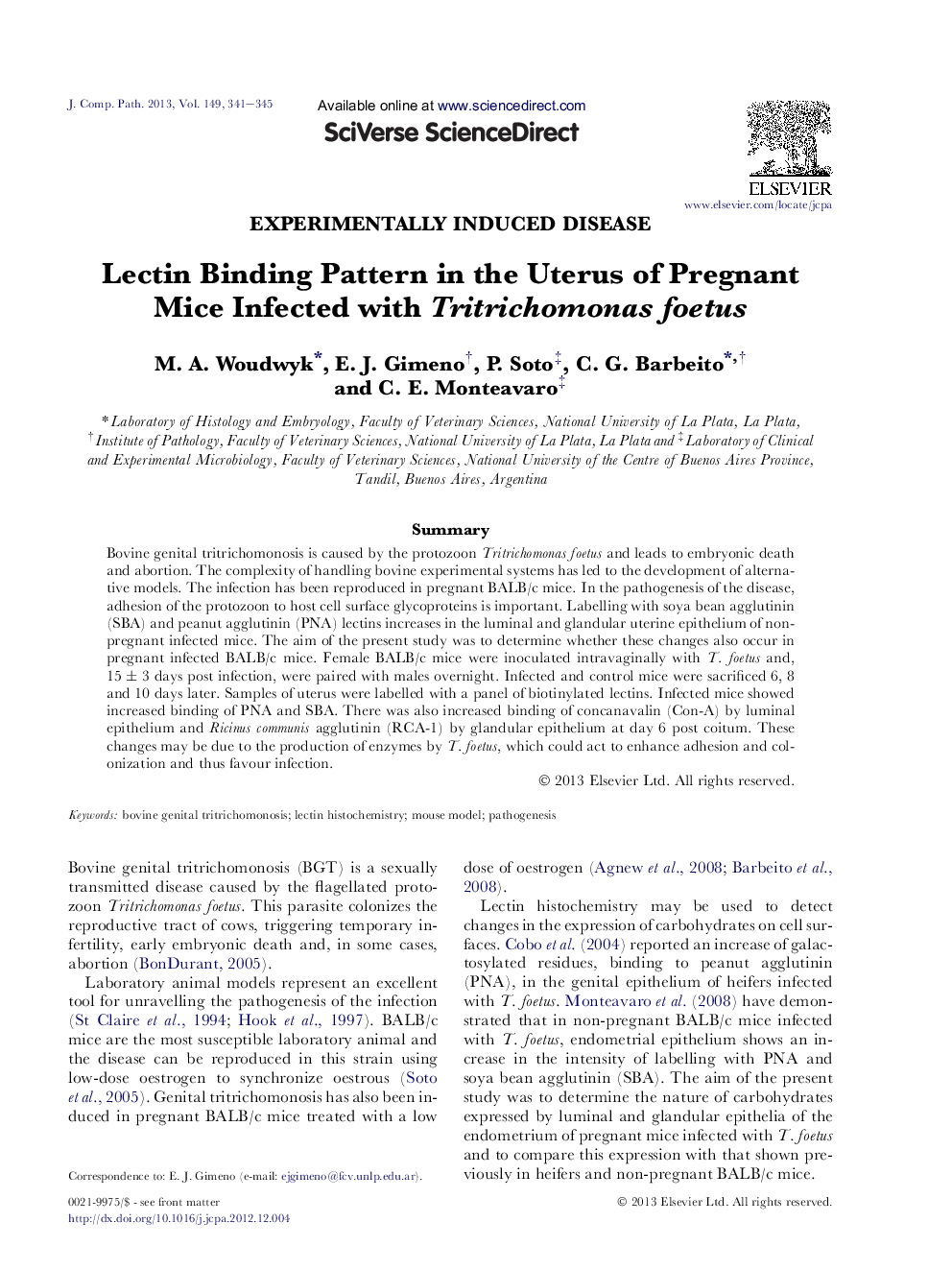| Article ID | Journal | Published Year | Pages | File Type |
|---|---|---|---|---|
| 2437426 | Journal of Comparative Pathology | 2013 | 5 Pages |
SummaryBovine genital tritrichomonosis is caused by the protozoon Tritrichomonas foetus and leads to embryonic death and abortion. The complexity of handling bovine experimental systems has led to the development of alternative models. The infection has been reproduced in pregnant BALB/c mice. In the pathogenesis of the disease, adhesion of the protozoon to host cell surface glycoproteins is important. Labelling with soya bean agglutinin (SBA) and peanut agglutinin (PNA) lectins increases in the luminal and glandular uterine epithelium of non-pregnant infected mice. The aim of the present study was to determine whether these changes also occur in pregnant infected BALB/c mice. Female BALB/c mice were inoculated intravaginally with T. foetus and, 15 ± 3 days post infection, were paired with males overnight. Infected and control mice were sacrificed 6, 8 and 10 days later. Samples of uterus were labelled with a panel of biotinylated lectins. Infected mice showed increased binding of PNA and SBA. There was also increased binding of concanavalin (Con-A) by luminal epithelium and Ricinus communis agglutinin (RCA-1) by glandular epithelium at day 6 post coitum. These changes may be due to the production of enzymes by T. foetus, which could act to enhance adhesion and colonization and thus favour infection.
